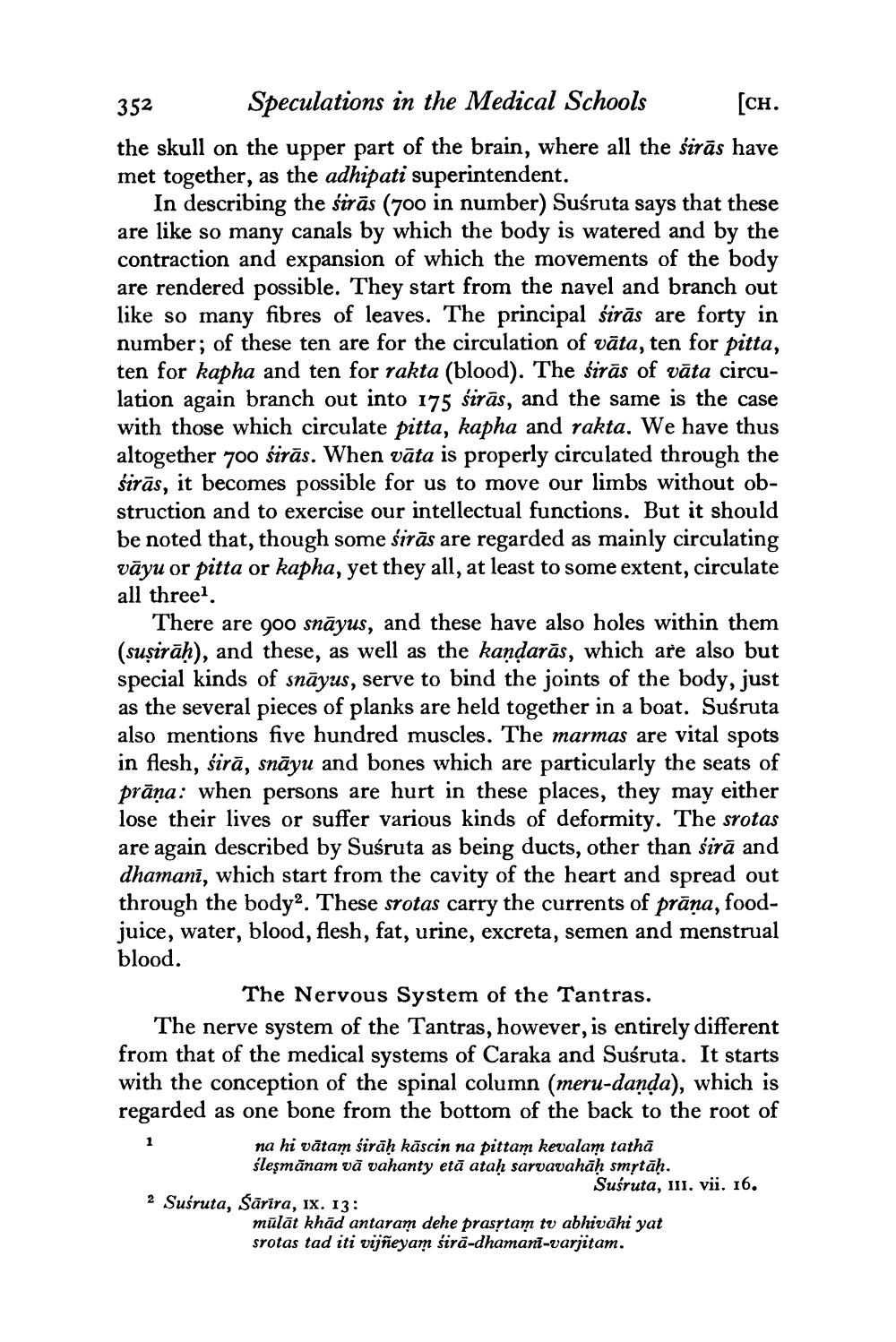________________
352
Speculations in the Medical Schools [CH. the skull on the upper part of the brain, where all the širās have met together, as the adhipati superintendent.
In describing the sirās (700 in number) Susruta says that these are like so many canals by which the body is watered and by the contraction and expansion of which the movements of the body are rendered possible. They start from the navel and branch out like so many fibres of leaves. The principal širās are forty in number; of these ten are for the circulation of vāta, ten for pitta, ten for kapha and ten for rakta (blood). The sirās of vāta circulation again branch out into 175 śirās, and the same is the case with those which circulate pitta, kapha and rakta. We have thus altogether 700 sirās. When vāta is properly circulated through the širās, it becomes possible for us to move our limbs without obstruction and to exercise our intellectual functions. But it should be noted that, though some śirās are regarded as mainly circulating vāyu or pitta or kapha, yet they all, at least to some extent, circulate all threel
There are 900 snäyus, and these have also holes within them (suşirāḥ), and these, as well as the kandarās, which are also but special kinds of snāyus, serve to bind the joints of the body, just as the several pieces of planks are held together in a boat. Susruta also mentions five hundred muscles. The marmas are vital spots in flesh, sirā, snäyu and bones which are particularly the seats of prāņa: when persons are hurt in these places, they may either lose their lives or suffer various kinds of deformity. The srotas are again described by Suśruta as being ducts, other than sirā and dhamanī, which start from the cavity of the heart and spread out through the body. These srotas carry the currents of prāna, foodjuice, water, blood, flesh, fat, urine, excreta, semen and menstrual blood.
The Nervous System of the Tantras. The nerve system of the Tantras, however, is entirely different from that of the medical systems of Caraka and Suśruta. It starts with the conception of the spinal column (meru-danda), which is regarded as one bone from the bottom of the back to the root of
na hi vātam sirāḥ kāscin na pittam kevalam tathā śleşmānam vă vahanty etā ataḥ sarvavahāh smrtāḥ.
Susruta, ill. vii. 16. 2 Susruta, Sārira, ix. 13:
mūlāt khād antaram dehe prasytam tv abhivāhi yat srotas tad iti vijñeyam sirā-dhamani-varjitam.




